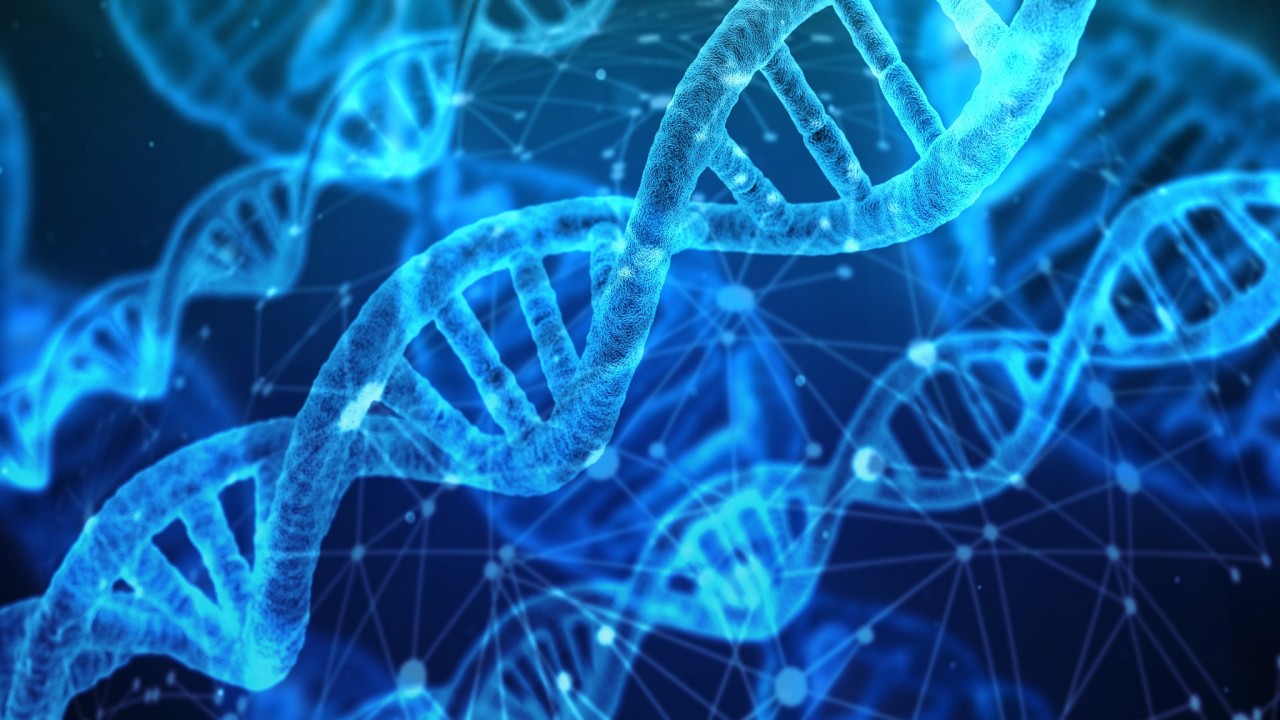
A person using the recommended patches here uses his body's own energy in the form of infrared body heat to activate the clusters in the patch. The patch then reflects light onto the skin, stimulating the nerves on the skin. So no substance penetrates the body, the patch works non-transdermally. The result is a specific change in body biochemistry, such as activation of stem cells by activation of GHK, a copper-binding peptide.
Peptides are chains of two or more amino acids. Peptides are not only the building blocks of proteins, they are also bioregulators and hormones that control the genetic expression and biological activity of all cells in the body.
Since the 1960s, an increasing body of research has discovered that peptides play an important role in regulating biological aging. The Russian military initiated much of the original peptide research to make their soldiers stronger and more resilient. This research was led by Prof. Dr. Vladimir Khavinson, who found that peptides are bioregulators that can slow down the aging process. While this info is basically reporting on the peptide GHK-Cu and its effects on stem cells and genes, it now appears that other peptides such as glutathione and carnosine are also gene regulators. Both glutathione and carnosine are also available as patches from us; i.e. these patches give the body the appeal to produce more glutathione or carnosine itself through biophoton light information impulses. The increase in these peptides can also be clearly demonstrated in the blood.
As biologically active peptides decrease with age, gene expression also decreases, resulting in decreased protein synthesis. The reduction of proteins and enzymes in the body leads to impaired metabolism and tissue repair and age-related decline and degeneration of the body. It is now known that increased peptide availability has anti-aging effects.
This information explains the extensive research on the peptide GHK-Cu. GHK-Cu levels are high in young people. In contrast, the concentration of GHK-Cu is low in people with advanced age. A study by the University of California at San Francisco, young male medical students (20-25 years) took part.
It has been found that over 200 ng (nanograms) of GHK-Cu are present per ml of blood plasma. In contrast, the healthy male medical school (mean age 60 years) had only 80 Ng GHK-Cu per ml blood plasma. This is a GHK Cu drop of 60 percent. (Pickart, 2008; Pickart et al., 2017). After the original discovery of GHK-Cu in 1973 by Loren Pickart, numerous articles and publications have appeared in the scientific community describing its beneficial and incredible properties.
• Increase in stem cells
• Activation of over 4000 genes to more youthful levels
• Pain relief
• Reduction of anxiety
• Repairing DNA damage and promoting DNA repair
• Production of anti-aging effects at the cellular level
• Promotion of organ regeneration
• Suppression of the production of fibrinogen, reducing the tendency for blood clots to form in the circulatory system
• Improving blood circulation in the tissue
• Tightens loose skin and increases the thickness of aged skin
• Improvement of skin moisture
• Stimulating collagen production
• Improving skin firmness, elasticity and clarity
• Reduces the appearance of fine lines, the depth of wrinkles and improves the texture of aged skin
• Smoothing rough skin
• Reduction of sun damage, blotchy hyper-pigmentation and skin blemishes
• Improvement of the general complexion
• Stimulating wound healing
• Protection of skin cells from UV radiation
• Reduction of inflammation and free radical damage
• Promoting hair growth and hair strength, increasing the size of hair follicle
• The blood protein albumin is the main source of copper transport in the bloodstream. The peptide GHK has the ability to acquire copper ions from albumin and moves copper into the cells of injured tissue (Pickart et al., 1980; Lau et al., 1981).
• “Due to its small size and unique copper-binding properties, GHK is able to achieve rapid exchange of copper in the intracellular matrix. (Pickart et al., 2018). ”
• GHK plays an important role in regulating copper availability at a cellular level. The key concept is that GHK gives the body the ability to correct copper imbalances at the cellular level. (Pickart et al., 2012b).
• A lack of intracellular copper impairs the activity of the copper-dependent enzyme SOD (superoxide dismutase). When SOD activity is impaired, cells are subjected to oxidative stress, which disrupts many cellular functions including DNA function and energy production. The energy production of cells is extremely impaired. The cells die. Cell death is the opposite of cell regeneration.
• Delivery of copper into cells is also important for stem cells to begin proliferating and regenerating tissues. (Pickart et al., 2015a).
• Copper is an essential element of the antioxidant protein SOD (copper zinc superoxide dismutase). Copper bound to GHK also activates genes and is involved in promoting antioxidant production and tissue regeneration. It accelerates wound healing, acts as a pain control, anti-inflammatory, and stimulates stem cells. (Pickart et al., 1980; Uauy et al., 1998).
• In addition to being an antioxidant, copper is involved in several biochemical processes. Copper is also involved in growth and differentiation, as well as nervous system health (Pickart et al., 2018).
• Memory problems and cognitive decline are common problems in an aging population. Peptides like GHK, which have both antioxidant producing and anti-inflammatory activity, are able to restore copper balance and induce youthful gene function. Restoring gene function in this way produces an anti-aging effect and may play a beneficial role in reducing associated cognitive decline (Pickart 2012b).
• For many years it was thought that the effects were due to GHK's ability to deliver small amounts of copper into cells (Pickart et al., 1980). Recent research since 2010 has found that when bound to copper, GHK modulates the action of over 4000 genes in a healthier state (Hong et al.,2010; Campbell et al. 2012; Pickart et al., 2015a; Pickart et al., 2017).
• Since Loren Pickart discovered the peptide GHK-Cu in 1973, there have been many research studies. Since these studies were published in science. Numerous effects have been identified in the literature as being caused by GHK. Over time, the question arose how such a simple peptide could cause such a wide range of effects (Pickart et al., 2018b). The answer came when gene expression studies were conducted on over 13,400 human genes. These gene expression studies revealed that GHK turned nearly one-third of human genes into a more youthful state through its gene activity.
• “GHK's copper activates regenerative and protective genes (Pickart et al., 2017). ”
• GHK activates antioxidant genes (Pickart et al., 2015). GHK has been found to increase levels of antioxidant enzymes and glutathione.
• GHK activates gene expression involved in wound healing. GHK accelerates skin wound healing and hair follicle formation. It accelerates regeneration processes in the liver, gastrointestinal tract, brain and bone tissue (Pickart et al., 2014). However, further research may reveal that GHK has broader effects at several other organs.
• GHK-Cu stimulates gene expression of DNA repair genes (Pickart et al., 2017). DNA damage in young people is usually repaired quickly. As aging progresses, DNA repair slows down. However, GHK promotes a more youthful appearance. GHK helps restore activity of DNA repair genes, thereby reducing the effects of aging (Pickart et al., 2014).
• GHK stimulates genes that remove damaged proteins (Pickart et al., 2017).
• GHK stimulates the expression of nerve-related genes involved in brain repair (Pickart et al., 2017).
• GHK-Cu can directly modulate over 4000 human genes and more. Importantly, gene expression results in a return to a more youthful, healthier individual. A condition that produces an anti-aging effect (Lamb, 2007; Iorio et al., 2010; Campbelletal., 2012)!
• GHK-Cu is abundant when humans are young, but levels decrease with age. GHK is typically released when tissues are injured. This explains why people heal much faster when they are young than when they are old. Numerous clinical studies have now shown that methods that increase GHK-Cu lead to faster healing of injuries (Pickart, 2008).
• Clinical studies have shown that GHK-Cu can tighten loose skin and improve skin thickness and elasticity. GHK-Cu can also finely reduce lines and wrinkles, as well as reduce hyperpigmentation and sun damage. (Finkley et al., 2005; Pickart et al., 2015a).
• GHK-Cu is found to be one of the most effective molecules for promoting skin repair and regeneration (Gorouhi et al., 2009). GHK stimulates the synthesis of collagen and elastin. Both proteins are necessary components of youthful skin (Pickart et al., 2018b). With age, skin loses collagen and elasticity and begins to sag and wrinkle. GHK-Cu has been found to improve skin's appearance, sometimes in a dramatic mode.
• “Krueger et al. confirmed an increase in skin thickness in the area of the epidermis and dermis, improved skin hydration, a significant smoothing of the skin by stimulating collagen synthesis and increased skin elasticity. Furthermore, a significant improvement in skin contrast and increased production of collagen was confirmed (Pickart et al., 2018b). ”
• Skin regeneration depends on maintaining the viability, proliferation and potential of stem cells. Unfortunately, the proliferation potential of skin stem cells decreases with age. The influence of GHK-Cu allows restoring the gene activity of healthy stem cells. The result is a more youthful level of skin. (Pickart et al., 2015a).
• GHK-Cu deficiency associated with aging may result in a less than optimal wound healing outcome.
• Several clinical studies indicate that GHK-Cu can accelerate wound healing through a variety of mechanisms including increasing stem cells in the skin. This produces growth factors and activates youthful genes. The production of collagen and elastin increases. Antioxidant levels are increased. This reduces inflammation and increases blood flow in wounds (Pickart et al., 2008; 2012b; 2018b; Gul, 2008; Gruchlik et al., 2012).
• By controlling oxidative stress and inflammation and delivering copper to injured tissues, wound healing can be enhanced. GHK-Cu can address these processes (Pickart, 2008).
• “In 2003, Canapp et al. were able to show that GHK-Cu improved the healing of ischemic wounds. GHK suppressed inflammation by lowering levels of acute-phase inflammatory cytokines such as TGF-beta and TNF-alpha (Piccardet., 2012b). ”
• GHK enhanced blood flow restoration to injured tissues by providing essential nutrients and oxygen for wound repair.
Source: David Schmidt, Lifewave, Inc..



You cannot copy content of this page